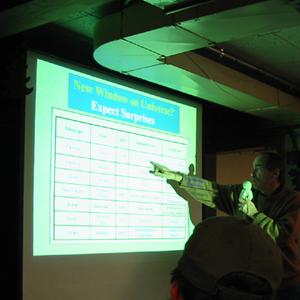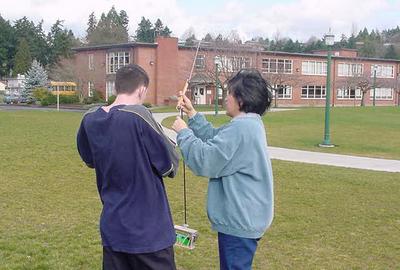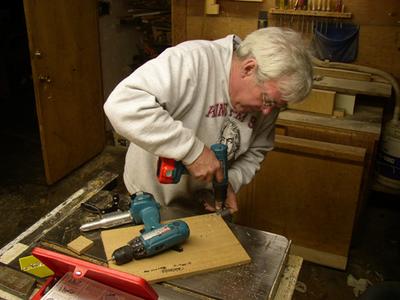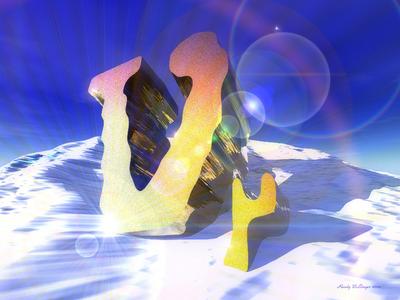16 December, 2002
16 December, 2002
Well, it's over, as I knew it would be some day. Time to leave this
vast whiteness. It's my birthday, too.
I worked on this trip for two years, and, as always, it's more about
the journey than the "goal" at the end. In this case the goal was the
journey (but stay with me here).
What did I learn along the way Here's a short list:
a) It's possible to get used to cold weather, and even grow to like
it, and to fly kites in it.
b) A desert can be made of snow as easily as sand.
c) It's very hard to be away from my family for this long.
d) Snow at -30 degrees is very scrunchy.
e) If beauty can exist here, it must be possible everywhere.
f) Finding the most ephemeral parcticles of existence means going to
the end of the earth.
What were the best things about the trip?
a) Bai, Phillipe, & Christian have a good sense of humor.
b) Sundogs and ice halos
c) The sparkling ice on the ground
d) Breathing the clean crisp air in the morning
e) really supportive South Pole staff, especially technology folks
f) our friend the sun, who never goes away
What was not so good?
a) The white "bunny boots" that kept my feet constantly wet
b) The otherwise eternal dryness of existence here
c) So long in the close company of so many strangers
d) Working too long outside a couple of times and getting too cold
e) Being away from my real job and family so long.
Would I come again? Probably, but not next year. It's a funny little
utopia here, people usually say "hi" to each other, but with a
cocoon-like bundled-up existence of work sessions divided by
mealtimes.
Was I able to contribute to the science tasks, looking for neutrinos
and cosmic rays? Maybe, in a very small way. But it's very hard to
jump into someone's world for a couple of weeks and make any
meaningful contribution. How would any of the scientists fare, thrust
into my working world for the same amount of time ?
How did the Kite Aerial Photography go? I got pictures of the Pole
and the dome, and that's been a huge goal for 18 months. I wish they
were better, but I think I did really well under the circumstances. A
month ago, I'd never flown a kite in below freezing weather. And who
would, in their right mind? Kites are still more fun in the summer.
And the portable cosmic ray detector? A fun idea, finished too close
to my departure date to be super-useful. But I made the packaging
well, and it arrived safely, unlike nearly every other experience
transporting it. The detector needs to be accompanied by a barometer
and thermometer for the data to be meaningful. The computer interface
(Vernier LabPro) does not record nearly enough data to be useful for
a several hour experiment, like the high altitude balloon experiment
I've been planning. This required using my computer, which was in use
several hours a day for TEA work, so the detector was, in the end,
underutilized. But the result I was really interested in was whether
a direct solar effect could be detected. And I did this experiment,
and the answer was no, even at this altitude, with the Sun always in
the sky.
Webcasts to schools? 7 attempted, 5 delivered, along with one phone
call. The TEA real player ‘casts were surprisingly effective, and
both very easy logistically, thanks to Steve Stevenoski and Arlyn
Bruccoli of the TEA program. The QuickTime streaming server was
really fun, but hampered by bandwidth and satellite issues. But I'll
use this more in the future.
Movies/pictures/computers/technology? I was really glad I brought my
own laptop, and 2 cameras. Olympus digital camera : great panoramic
feature, 0 out of 5 on durability. Sony camcorder: tough as nails,
even on a kite at -45 windchill. Extra hard drive was a great idea,
but the hard drive, A Kanguru portable, was slow and very very
finicky. Don't buy one. Sort of like a car with no windshield and
muffler. Use it, when there's nothing else.
Effect on students? Too early to tell. Certainly not much in the way
of penetrating or perceptive questions during the webcasts. "How's
the food?" was a common theme. I made close to 100 movies and
multimedia pieces that tried to communicate the experience, but it's
an open question how many of my students or friends or family read
the journals or looked at the pictures. But there were other folks,
total strangers, who got some inspiration. This morning, a guy
emailed me a picture out of the blue, his computer art takeoff on the
ice sculpture of a neutrino symbol I posted in one of my journals.
Cool. Amazing synergy.
Effect on me? Too early to tell in some ways. I certainly learned a
lot of neutrino physics and detector technology. And I had a big,
multi-faceted project to work on, which is crucial to my sense of
purpose in life.
I'm also exhausted, and at a crossroads, having completed something
I've been planning so long. There have been many times over the last
couple of years I've thought about leaving teaching, and this trip
was, a few times, the best single reason I could find to stay in the
job. But I've got a job now in a place I really like, at Roosevelt
High School. Did TEA keep me in teaching long enough to find a job in
Seattle I want to work at for more than a year? Yup.
Who to thank for help along the way ?
a) Drachen Foundation folks, especially Ali Fujino, Scott Skinner,
and Jim Day, who thought that a kite picture of the South Pole would
be cool, and put a lot of things in front of me to help make that
happen.
b) Jim Madsen and Bob Morse of the AMANDA collaboration at the
University of Wisconsin, who decided to involve teachers in their
research.
c) The NSF folks, except for Guy Guthridge, mostly unknown to me, who
approved my application ,and the TEA program itself, and sent me to
the pole.
d) Xinhua Bai of Bartol Research Institute, whose good humor and hard
work paved the road at the Pole
e) The rest of the AMANDA folks at the Pole, especially my McMurdo
roommates Christian Spiering and Phillipe Herquet, who are more down
to earth and fun than any physics professors should be.
e) Arlyn Bruccoli, Steve Stevenoski, and Stephanie Shipp of the
Teachers Experiencing Antarctica program, who had answers to every
question.
f) Teachers Paul Witt, Bob Olona, and Becky Fowler, who came with me
last summer to learn about neutrinos.
g) Roosevelt High School staff, especially Louie Hamm, who filled in
for me, Jeff Rosenfeld, who fought the webcast battle, and Science
Department Chair Kathy Olson, Assistant Principal Elizabeth Guillory,
and Principal Lisa Kodama, who were immediately supportive from the
first moments they heard where I was going.

Thanks also to Bob Morse, the P.I. (head AMANDA guy) from the University of Wisconsin, who's been instrumental in bringing teachers along to the Pole for several years.

Thanks also to my family, who lost a big piece of me as I prepared for nearly 2 years for this trip. That's Enrico, Gabriella, and Eleuterio. I did a web conference with Tello's class on Friday, and it sure was good to hear his voice.

Thanks to Steve Stevenoski, who runs the technology that makes the TEA webcasts work !

Special thanks to Ali Fujino & all the Drachen Foundation board, staff, and support personnel (!) (especially Scott, Leslie, Matt, and Jim), who generously supported the kite aerial photography part of the adventure, and whose commitment to education and kids is profound, creative, and has been a lot of fun. Ali (left) is assisting a student from TEA Shannon Graham's photography class get a kite aerial photography rig set up. For more information about flying kites (all kinds, all conditions), check out www.drachen.org

My thanks to Jim Day, who taught me some things about flying kites and taking some pictures from them.

This picture was made by Randy Bollinger, who liked that picture of the neutrino symbol done in an ice carving, and used it as a basis for this cool neutrino art. This picture will have to stand in for all the thank-yous I made but didn't have pictures for.
Contact the TEA in the field at
.
If you cannot connect through your browser, copy the
TEA's e-mail address in the "To:" line of
your favorite e-mail package.
|
